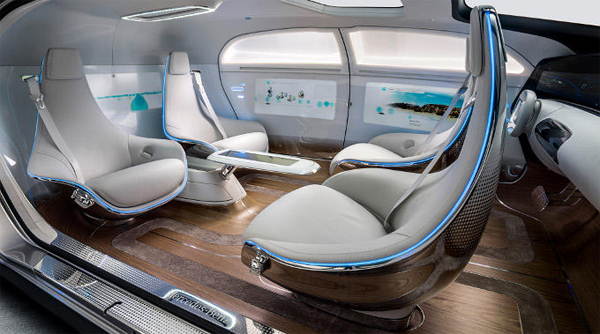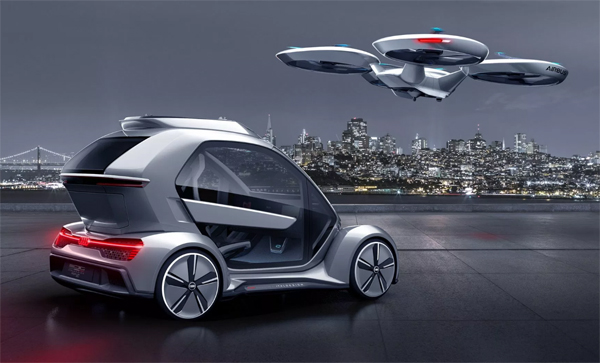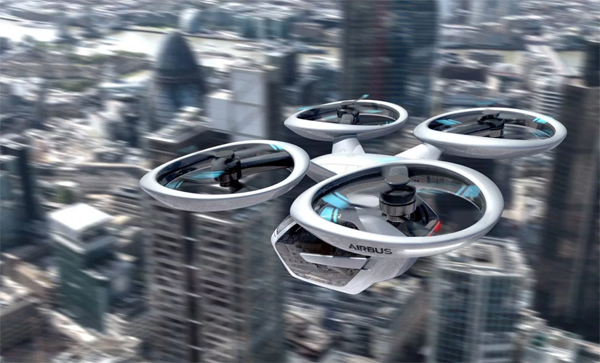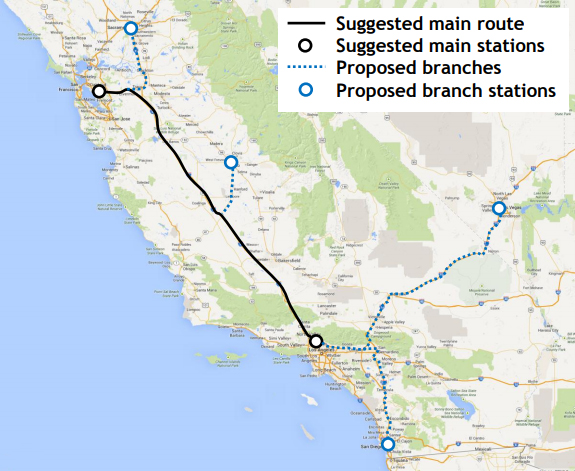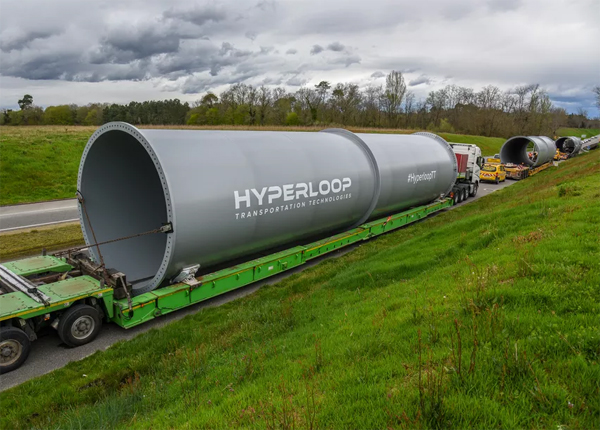How to Revive California’s Republican Party Which is Currently Dead
Anyone taking a look at California’s June 2018 state primary ballot would have plenty of evidence to suggest the Republican Party in that state is dead. For starters, California’s GOP has two credible candidates for governor, businessman John Cox and State Assemblyman Travis Allen, which in a normal state might be a good thing. But California’s Republicans are a super-minority party in an open “top-two primary” that pits them against at least two well-funded Democratic candidates, Lt. Governor Gavin Newsom and former Los Angeles Mayor Antonio Villaraigosa. Although Cox is polling better than Allen, they’re both likely to be aced off the ticket in November.
Worse, California’s Republicans have no viable candidate for U.S. Senate. The most recognizable candidate—indelibly listed as “Republican” on the ballot despite being kicked out of the recent GOP state convention—is Patrick Little, whose campaign website’s home page includes a “learn more” button on the topic of “How We Will End Jewish Supremacism.”
There is not one higher state office in California where a Republican has a realistic chance of victory. Nearly every position—lieutenant governor, attorney general, treasurer, controller, and state superintendent of schools—Democratic candidates are likely to win. The lone exception is insurance commissioner, where the respected Steve Poizner, who has already held that office as a Republican from 2007 to 2011, is now running as an independent.
California’s GOP Party Organization Has Failed
If you go to the California GOP website to view endorsements, you will see the party faithful failed to choose a gubernatorial candidate. This failure of leadership means that their two candidates, Allen and Cox, are likely to split the support of GOP voters, which increases the likelihood that neither Republican will advance to the general election. (Though current polling suggests Cox could squeak through.) Given the fierce determination of both these candidates, one might forgive the state GOP for not managing to make a selection.
But the state GOP’s failure to make endorsements, which are critical in open primaries where only the top two candidates advance, continues down the ticket.
For state treasurer, there is “no endorsement,” despite two Republican candidates on the ballot. For U.S. Senate, there is “no endorsement,” despite 11 Republican candidates on the ballot. That lapse renders it likely that the top Republican vote-getter in the race for U.S. Senate will be the candidate with the most name recognition—you guessed it, the loathsome Patrick Little.
For insurance commissioner, the state GOP apparently didn’t know what to do, since most of them realize former Republican Steve Poizner is a good choice. So instead of “no endorsement” showing up, they simply omitted that position from their list of endorsements. Why couldn’t the state GOP recruit and promote top candidates? Is there really any excuse for this, when there are still tens of thousands of highly successful men and women who are registered Republicans in California and would be good candidates?
When you look for leadership in California’s Republican party, you might consider the last candidate for governor who had a respectable showing: Meg Whitman. (The less said about Neel Kashkari, the better.) But Whitman just publicly endorsed a Democrat, Antonio Villaraigosa. With leadership like that, who needs enemies? Is Whitman a RINO? Is she a turncoat? Or, to be brutally honest, is she just recognizing the cold reality that California is a one-party state, so she wants to support the person she perceives to be the lesser evil?
Demographic Trends Favor the Democrats
If demographic trends and current voting patterns persist, California is going to be a one-party state for a very long time. According to the Public Policy Institute of California, among California’s “likely voters,” more whites are registered as Republicans, 39 percent, than Democrats, 38 percent. But “whites” are only 38 percent of California’s population, and that percentage is dropping fast. Among residents under 18 years old, excluding illegal aliens, whites are now barely 25 percent of California’s population. Why does this matter?
Because among likely voters, Latinos registered as Democrats (62 percent) far outnumber Latino Republicans (17 percent). Among blacks, the disparity is even greater—82 percent Democrat versus 6 percent Republican. Among Asians, where the disparity is less, the Democrats still have a nearly two-to-one advantage, 45 percent to 24 percent.
California’s Democrats successfully have tainted Republicans as racist ever since Governor Pete Wilson supported Proposition 187 in 1994. That citizens’ initiative, narrowly passed by voters then utterly decimated by liberal judges, would have—gasp!—denied taxpayer-funded public services to illegal immigrants. Ever since, any attempt to place realistic curbs on benefits for illegal aliens has been met with militant opposition by Democrats who control a supermajority in California’s legislature. California’s Democrats have played the race card with impunity.
In late 2016, when incoming President Trump proposed to deport criminal aliens, Democratic Assemblyman Ricardo Lara—now running for insurance commissioner—threatened to “fight in the streets” to preserve “the work we have done.” Democratic State Senator Kevin de León—now running for U.S. Senate against long-time incumbent Democratic Dianne Feinstein—frequently refers to “President Trump’s racist-driven deportation policies.” California attorney general Xavier Becerra has been quoted stating that “Trump was showing himself to be a racist in every respect.” Examples are endless. This November, California’s Democrats are going to make Patrick Little and Donald Trump the running mate of every Republican on every ballot in the state.
But will this work forever? Does California’s GOP have to stay dead? Will “people of color” continue to believe that California should be a one-party state?
Demographics Is Not Destiny
Eventually, California’s Democrats are going to go too far, because their policies are economically unsustainable. Gavin Newsom, the favorite to occupy the governor’s mansion in 2019, proposes a single-payer health care system for the state, something that would cost at least $200 billion a year, in addition to sowing chaos throughout California’s healthcare industry. Meanwhile, California’s Democrats propose to offer full health insurance coverage to illegal immigrants, spend tens of millions to provide free college tuition to illegal immigrants, in a state where taxpayers already fund over $25 billion per year to provide public services to illegal immigrants.
How long can this go on?
Objecting to these costly programs may attract accusations of racism, but growing numbers of Latinos, blacks, and Asians, along with white liberals, may eventually decide that Democrats no longer have the answer. All it will take is one major stock correction, or one more downturn in the historically cyclical tech industry, and California’s public finances will implode. All of a sudden, hundreds of billions in tax receipts necessary to sustain free health care, free tuition, and public-sector pensions, to say nothing of benefits for illegal aliens, will vaporize. Economic calamities that reach deep into the pocketbooks and tragically disrupt the lives of ordinary voters have a way of focusing the mind.
The GOP’s case in such times, and to prevent such times, is not abstruse. It goes like this: For decades, Democrats have told you that the most important issue in the world was protecting yourselves from white racism. But while you were voting for the people who kept telling you this, their government unions, controlled by Democrats, were destroying the public schools that might have provided your children with a useful education.
Their government bureaucracies, controlled by Democrats, were driving small businesses out of business with ridiculous, punitive regulations, forcing many of them to flee the state, denying you jobs and entrepreneurial opportunities.
Instead of investing in transportation and water infrastructure to enable a reasonable quality of life to long-time residents and new arrivals alike, Democratic politicians used taxpayers’ money to overpay the government employees, so that government unions would fund the Democratic Party.
The GOP’s case doesn’t end with exposing racism as a diversion from the real issues of economic growth. It also exposes extreme environmentalism, and the synergy between the environmental movement, the overbuilt public sector, and left-wing oligarchs.
For decades, these extreme environmentalists, all of them Democrats, prevented perfectly benign land development in a state literally sprawling with open space. They did this in the name of saving the earth, downplaying how the resulting real estate bubble pumped up government property tax receipts and goosed the returns for the real estate portfolios in government pension funds. They prevented private investment in cheap conventional energy—in particular, clean natural gas and nuclear power—so residents have to pay twice as much (or more) for electricity as people in other states. Democrats barred private investment in oil drilling and refining, and imposed automotive and fuel standards in conflict with the rest of the United States, so Californians pay substantially more at the gas pump.
A Pro-Growth Economic Opportunity Agenda for California
Turning California back into the land of opportunity isn’t that hard, since it still has the best universities, the best weather, and the largest, most diverse economy in America. And California’s GOP politicians can make it happen, by promoting a pro-growth agenda at the same time as they expose identity politics and extreme environmentalism for what they are—a gigantic scam that distracted voters from the real issues. Here is a pro-growth, economic opportunity agenda for California:
Education
Restore the balance in California’s colleges and universities so that the ratio of faculty to administrators is 2-to-1, instead of the current ratio that allows administrators often to outnumber teachers.
End all discrimination and base college admissions purely on merit. Expand STEM curricula so it represents 50 percent of college majors instead of the current 20 percent.
Enforce the Vergara reforms so it is easier to retain quality public school teachers and easier to fire the incompetent ones. Eliminate barriers to charter schools.
Criminal Justice
Restructure the penal system to make it easier for prisoners to perform useful public services. For example. along with working the fire lines during fire season, they could work all year clearing dead trees out of California’s forests. Use high-tech monitoring devices to reduce costs. Reserve current prisons only for the truly incorrigible.
Infrastructure
Scrap the high-speed rail project and instead use the proceeds to add one lane to every major interstate in California, and upgrade and resurface all state highways.
Use additional high-speed rail funds to complete plant upgrades so that 100 percent of California’s sewage is reused, even treated to potable quality.
Pass legislation to streamline approval of the proposed desalination plant in Huntington Beach, and fast-track applications for additional desalination plants, especially in Los Angeles.
Spend the entire proceeds of the $7 billion water bond, passed overwhelmingly by Californians in 2014, on storage. Build the Los Banos Grandes, Sites, and Temperance Flat reservoirs, adding over 5.0 million acre feet of storage to the California Water Project. Pass aggressive legislation and fund aggressive legal actions and counteractions, to lower costs and enable completion of these projects in under five years (which is all the time it used to take to complete similar projects).
Energy
Permit slant drilling to access 12 trillion cubic feet of natural gas deposits from land-based rigs along the Southern California coast. Build an LNG terminal off the coast in Ventura County to export California’s natural gas to foreign markets. Permit development of the Monterey Shale formation to extract oil and gas.
Permit construction of “generation 3+” nuclear power plants in geologically stable areas of California’s interior. Permit construction of new natural gas power plants.
Housing
Repeal the 2006 “Global Warming Solutions Act” and “Sustainable Communities and Climate Protection Act” of 2008 and make it easy for developers to build homes on the suburban and exurban fringes, instead of just “in-fill” that destroys existing neighborhoods.
Pensions and Infrastructure
Require California’s public employee pension funds to invest a minimum of 10 percent of their assets in infrastructure projects as noted above. They could issue fixed rate bonds or take equity positions in the revenue-producing projects, or a combination of both. This would immediately unlock approximately $80 billion in construction financing to rebuild California’s infrastructure. At the same time, save the pension systems by striking down the “California Rule” that prevents meaningful pension reform.
These reforms would lower the cost of living in California, at the same time as they would create resource abundance and hundreds of thousands of high-paying jobs.
Why Republicans Are the Most Qualified to Rescue California
Once you’ve debunked the narrative that Republicans are racists, it is easier for voters, regardless of their ethnicity, to see their virtues. To a startling degree, California’s Republican legislators typically come from business backgrounds, whereas most Democratic legislators come from a government agency or a nonprofit background.
In 2016, an analysis of the biographies of California’s state legislators showed that 69 percent of Republican legislators came from a business background, 19 percent of them had some business and some government or nonprofit experience, and only 11 percent of them came exclusively from a government or nonprofit background. By contrast, only 6 percent of Democrats came from a business background, only 18 percent of them came from a mixed business and government or nonprofit background, while a whopping 76 percent of them came exclusively from a government or nonprofit background. One can draw profound conclusions from this unambiguous data.
In business, competence is emphasized; in government, personal connections are everything. In business, the objective is to competitively build and run productive companies; in government, to control, coerce, and redistribute. To work in business one must study engineering or finance and accounting. To work in government, one may study sociology or earn a major in any number of social justice-oriented “studies.”
What is the result of California’s Democratic lawmakers, in overwhelming numbers, lacking any experience in business? A state where financial realism is eclipsed by confrontational, utopian fantasy. A state where self-righteousness and self-deception are the currency of governance, instead of factual analysis and hard choices. A state where the infectious optimism that defines and is a prerequisite for business leadership is absent from a dismal capital.
Republicans can offer an irresistible alternative. They can promote abundance instead of scarcity; prosperity instead of an “era of limits;” hope and opportunity instead of resentment, retribution and redistribution; universal upward mobility instead of divisive scrapping for diminishing wealth.
They need to get busy.
This article originally appeared on the website American Greatness.
* * *

Edward Ring is a contributing editor and senior fellow with the California Policy Center, which he co-founded in 2013 and served as its first president. He is also a senior fellow with the Center for American Greatness, and a regular contributor to the California Globe. His work has appeared in the Los Angeles Times, the Wall Street Journal, the Economist, Forbes, and other media outlets.
To help support more content and policy analysis like this, please click here.

